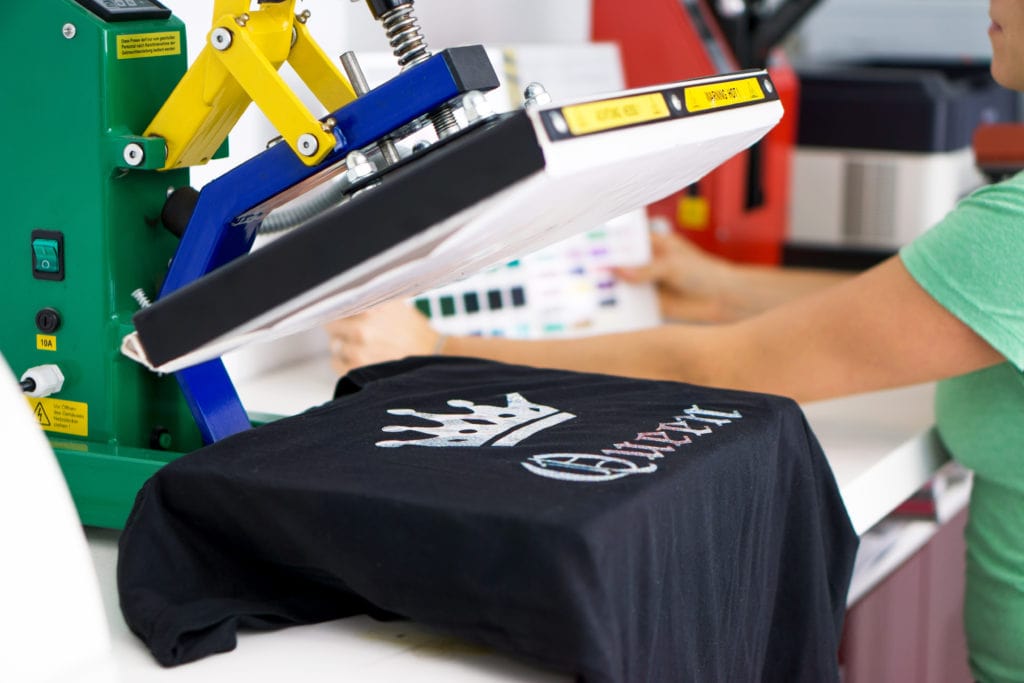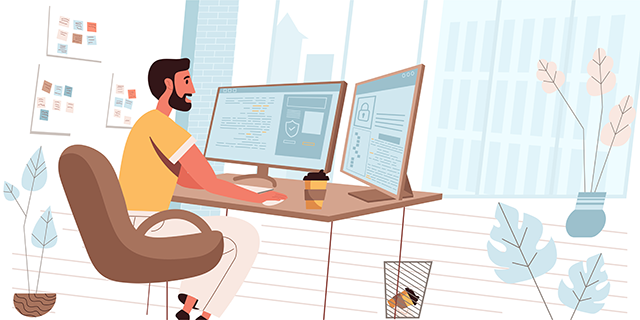
4 ways to print on clothes
Have you been thinking about starting a clothing printing business or expanding your custom clothing business? Making this decision requires that you spend some time researching the options available and methods for transferring original designs onto clothing. Dallas Shirt Printing provides a short guide for beginners will help you evaluate all the pros and cons of the most common technologies.
Printing on universal printers
T-shirts, jacket backs, tank tops, etc. may now be printed on using a new technique called “direct-to-garment printing.” To create a custom design on a T-shirt, you will need an all-in-one printer , pre-treatment fluid, and a heat press or conveyor dryer.
Direct-to-garment printing devices like these work in the same way as an inkjet printer, which you might find in your home or office. The universal printer applies special clothing ink directly to the fabric. But to use this printing method, you must pre-treat the clothes before loading them into the printer. For better ink adhesion to the fabric, pre-treatment is necessary, which prevents the ink from being absorbed into the clothing and helps the design last longer.
Once uploaded, the design is printed on the garment. Last but not least, pin the pattern to the fabric until it is a perfect fit. You do this using a heat press or a conveyor dryer to ensure the clothes hold up to many washes and don’t fade too quickly.
Pros
- Easily create custom designs and products
- High quality photorealistic design
- The finished print is designed for at least 50 washes
- Almost mess-free printing process
- Option for speedy, varied bulk orders
- Easily switch between designs from the printer control panel
Cons
- Pre-treatment of garments before printing
- The cost of ink depends on the color, size, complexity of the design and what product you are printing on
- Expensive equipment
Screen printing
Screen printing is an older, more labor-intensive printing method. This is because you need to manually push the ink through the stencil onto the fabric.
First, you need to make a screen that is a stencil of the design you want. Screen printing involves preparing a screen, loading ink onto the screen, and then pressing the ink through the screen onto the fabric using a screen press or a table. This is a simplified version, but the process includes many preparation and configuration steps.
Pros
- Cost effective for large quantities of the same design
- Fast option when printing 50 shirts with the same design (even faster if you have multiple screens with the same design)
- Versatility of printing (on various areas of clothing and on materials such as wood, glass and banners)
Cons
- Requires a screen for each design and color, which can be expensive (time and money)
- Suitable space required for equipment
- The most messy of clothing decoration options
Sublimation printing
Sublimation is a printing method in which special inks are transferred from paper to clothing using a heat press. Sublimation ink printers are required for this task.
When the ink is heated by the press’s heat plate, it changes from a solid to a gas and is embedded into the fabric. When they cool completely, they become a permanent part of the material.
+
- The design is embedded into the fabric and lasts much longer than designs using other printing methods
- Bright, high-quality drawings without the feeling of “handicraft” production
- Sublimation also works with hard objects, such as mugs or other souvenirs.
Cons
- Only works with polyester or high poly blend clothing
- Solid objects must be polyester coated
- Transferring by hand requires precision and attention to prevent ink bleeding and pattern moving.
Vinyl transfer
Heat transferring a vinyl design is when you pre-cut it on a cutting plotter and transfer it onto fabric using a heat press. Sports jerseys, purses, and other products often use vinyl prints due to their durability and longevity.
To print on vinyl, you start by connecting a cutting plotter to your computer to cut out designs. After the design has been printed, any unnecessary parts must be cut away. Then, press the garment using a heat press plate once it has been placed on the garment.
Pros
- Possibility to place the design anywhere on the garment
- Low cost of entry
- Profitability of small and medium orders
- Great for any clothing and surfaces such as cotton, polyester, ceramic, wood, metal, etc.
- Clear and bright design
Cons
- Not easily automated or scalable, which makes large orders difficult to fulfill.
- Not economical for 15 or more garments
- Possible cracks in vinyl
- Requires more production time – the design is cut out on a plotter rather than printed
Each kind of textile printing has its advantages and disadvantages.The most crucial step before investing in any printing technology is to do thorough research. Think about the specifics of your printing needs, your target market, and the amount of time and money you have available before making a call.
You can ask any questions you are interested in about printing methods, technologies and equipment to the sales managers of our company.



